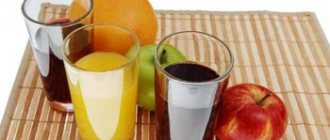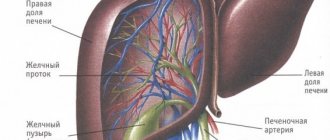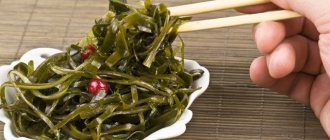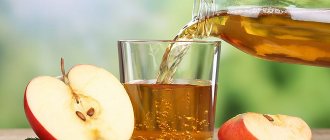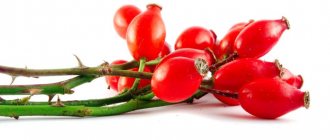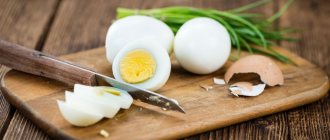What to eat before donating blood
For two days, do not drink alcoholic beverages; the day before, exclude fatty, fried, spicy, smoked, dairy products, eggs, butter from your diet; it is recommended - sweet tea, jam, bread, crackers, dried cereals, boiled cereals, pasta in water without oil, juices , fruit drinks, compotes, mineral water, vegetables, fruits (except bananas).
Compliance with these requirements is especially important if you are donating platelets or plasma. Neglecting them will not allow high-quality separation of your blood (separation of the necessary components) and will make donation impossible.
Lots of liquid
It is better to drink compotes, herbal teas and freshly squeezed, but slightly diluted juices with water (since undiluted juices are very concentrated, and drinking a lot of them is not healthy). Drinks will help restore the amount of fluid in the body.
Herb tea
1 tbsp. chopped raspberry leaves
1 tbsp. l. St. John's wort flowers
1 tbsp. l. fireweed
2 clove buds
¼ apple
Step 1 . Pour a small amount of boiling water over the herbs in the teapot. Throw in a clove. Let it brew.
Step 2 . Add hot water until the kettle is full. Wait 2 minutes.
Step 3 . Finely chop a quarter of an apple into a cup and pour in the herbal infusion.
List of contraindications to donating blood and its components
I. ABSOLUTE CONTRAINDICATIONS (withdrawal from donation, regardless of the duration of the disease and treatment results)
Blood-borne diseases:
- Infectious:
- AIDS, HIV carriers and people at risk (homosexuals, drug addicts, prostitutes);
- Syphilis, congenital or acquired;
- Viral hepatitis, positive test result for markers of viral hepatitis (HBsAg, anti-HCV antibodies);
- Tuberculosis, all forms;
- Brucellosis;
- Typhus;
- Tularemia;
- Leprosy;
- Parasitic:
- Echinococcosis;
- Toxoplasmosis;
- Trypanosomiasis;
- Filariasis;
- Guinea worm;
- Leishmaniasis;
Somatic diseases:
- Malignant neoplasms;
- Blood diseases;
- Organic diseases of the central nervous system;
- Complete absence of hearing and speech;
- Mental illnesses;
- Drug addiction, alcoholism;
- Cardiovascular diseases:
- Hypertension stage II–III;
- Cardiac ischemia;
- Atherosclerosis, atherosclerotic cardiosclerosis;
- Obliterating endarteritis, nonspecific aortoarteritis, recurrent thrombophlebitis;
- Endocarditis, myocarditis;
- Heart disease;
- Bronchial asthma;
- Bronchiectasis, pulmonary emphysema, obstructive bronchitis, diffuse pneumosclerosis in the stage of decompensation;
- Achilles gastritis;
- Peptic ulcer of the stomach and duodenum;
- Chronic liver diseases, including those of a toxic nature and unknown etiology;
- Calculous cholecystitis with repeated attacks and symptoms of cholangitis;
- Cirrhosis of the liver;
- Diffuse and focal kidney damage;
- Urolithiasis disease;
- Ozena;
- Other acute and chronic severe purulent-inflammatory diseases;
- Residual effects of uveitis (iritis, iridocyclitis, chorioretinitis);
- High myopia (6 D or more);
- Trachoma;
- Complete blindness;
- Common skin diseases of an inflammatory and infectious nature;
- Generalized psoriasis, erythroderma, eczema, pyoderma, sycosis, lupus erythematosus, blistering dermatoses;
- Fungal infections of the skin (microsporia, trichophytosis, favus, epidermophytosis) and internal organs (deep mycoses);
- Pustular skin diseases (pyoderma, furunculosis, sycosis);
II. TEMPORARY CONTRAINDICATIONS
| Name | Deadline for withdrawal from donation |
| 1. Factors of infection with blood-borne diseases: | |
| 1.1. Transfusions of blood and its components (with the exception of burn convalescents and persons immunized to the Rh factor) | 6 months |
| 1.2. Surgical interventions, incl. abortions (a medical certificate is required) (extracts from the medical history) on the nature and date of the operation) | 6 months from the date of surgery |
| 1.3. Getting a tattoo or acupuncture treatment | 120 calendar days |
| 1.4. Staying on business trips abroad for more than 2 months | 6 months |
| 1.5. Stay in malaria-endemic countries with tropical and subtropical climates (Asia, Africa, South and Central America) for more than 3 months | 3 years |
| 1.6. Contact with patients with hepatitis: | |
| - hepatitis A | 3 months |
| - hepatitis B and C | 1 year |
| 2. Past diseases: | |
| 2.1. Infectious diseases not listed in the “Absolute contraindications” section: | |
| - history of malaria in the absence of symptoms and negative immunological test results | 3 years |
| — typhoid fever after recovery and a full clinical examination in the absence of pronounced functional disorders | 1 year |
| - sore throat, flu, ARVI | 1 month after recovery |
| 2.2. Other infectious diseases not listed in the section “Absolute contraindications” and clause 2.1 of this section | 6 months after recovery |
| 2.3. Tooth extraction | 10 days |
| 2.4. Acute or chronic inflammatory processes in the acute stage, regardless of location | 1 month after relief of the acute period |
| 2.5. Vegetative-vascular dystonia | 1 month |
| 2.6. Allergic diseases in the acute stage | 2 months after relief of the acute period |
| 3. Pregnancy and lactation period | 1 year after birth, 3 months after the end of lactation |
| 4. Menstruation period | 5 days from the end of menstruation |
| 5. Vaccinations: | |
| - vaccination with killed vaccines (hepatitis B, tetanus, diphtheria, whooping cough, paratyphoid, cholera, influenza), toxoids | 10 days |
| - vaccination with live vaccines (brucellosis, plague, tularemia, BCG vaccine, smallpox, rubella, oral polio), administration of anti-tetanus serum (in the absence of pronounced inflammatory phenomena at the injection site) | 1 month |
| - administration of immunoglobulin against hepatitis B | 1 year |
| - vaccination with rabies vaccine | 2 weeks |
| 6. Taking medications: | |
| - antibiotics | 2 weeks after the end of treatment |
| - analgesics, salicylates | 3 days after the end of treatment |
| 7. Drinking alcohol | 48 hours |
| 8. Changes in biochemical blood parameters: | |
| - increase in alanine aminotransferase (ALT) activity by less than 2 times | 3 months |
| - repeated increase or increase in ALT by 2 or more times | removal from donation and referral for examination |
| — dysproteinemia | 1 month |
Note:
If the donor has diseases not included in this List, the issue of admission to donation is decided by a commission by a transfusiologist and the relevant specialist(s).
Nutrition for donors. Guidelines.
Normative base.
The basis for the development of methodological recommendations for the nutrition of donors were:
1. Federal Law of the Russian Federation dated June 20, 2012 No. 125 Federal Law “On the donation of blood and its components.” Article 4 determines that donation of blood and (or) its components is based on the following principles:
- safety of donor blood and its components;
- voluntary donation of blood and (or) its components;
- maintaining the health of the donor while performing the donor function;
- ensuring social support and respecting donor rights
Article 10. Powers of state authorities of the constituent entities of the Russian Federation in the sphere of circulation of donor blood and (or) its components: establishing the diet of a donor who donated blood and (or) its components free of charge, not lower than the approximate diet of the donor. Article 22. Social support measures provided to a donor who donated blood and (or) its components free of charge: on the day of donation of blood and (or) its components, a donor who donated blood and (or) its components free of charge is provided with free food at the expense of the organization carrying out activities for the procurement of donor blood and its components. The food ration of such a donor is established in accordance with paragraph 4 of part 1 of Article 10 of this Federal Law by the executive body of the constituent entity of the Russian Federation under whose jurisdiction the specified organization is located. 2. Order of the Ministry of Health of the Russian Federation dated December 13, 2012 No. 1039n “On approval of the Approximate Dietary Diet of a donor who donated blood and (or) its components free of charge . 3. Order of the Ministry of Health of the Russian Federation dated March 12, 2013 No. 124n “On approval of cases of replacing free donor meals with monetary compensation.”
Justification of the chemical composition and energy value of the donor's diet.
Numerous studies have proven that in the vast majority of donors, primary and repeated blood donations, plasma and platelet apheresis at intervals provided for by the “Procedure for medical examination of blood donors and its components” are not accompanied by pathological changes in the blood system, protein balance, coagulation system and hemodynamic parameters . This occurs due to the activation of human reserve capabilities aimed at maintaining the stability of the basic functions of the body. The most significant losses of the donor’s body after donating 400 ml of blood:
- protein - up to 72 g,
- iron - up to 0.3 g,
- mineral salts - up to 4 g
- fats - 2 g,
- water up to 350 ml.
Replenishment of blood loss requires:
- immediate supply of fluid and minerals to prevent hypovolemia and equalize osmotic balance (mineral water with mineralization 5-10 g/liter, juice, tea or coffee with sugar) before and after donation of blood or its components;
- supply of nutrients to provide the body with energy and plastic material , which are necessary to replenish the volume of blood loss and ensure the anabolic process, ensuring the biosynthesis of blood components and restoration of homeostasis.
Order of the Ministry of Health of the Russian Federation dated December 13, 2012 No. 1039n approved the “Approximate diet of a donor who donated blood and (or) its components free of charge” (Appendix 1). The composition of this set provides 98 g of protein, about 100 g of fat, 250 g of carbohydrates. Its calorie content is about 2600 kcal. The nutritional substances of the products fully cover the loss of plastic material from the donor’s body on the day of blood donation. Drinks included in the diet replenish lost fluid and minerals.
Organization of nutrition for the donor.
On the day of donating blood or its components. Before donating blood or its components, to prevent the development of a hypovolemic reaction, the donor should receive a portion of a drink (mineral water, juice, hot tea or coffee) from the donor’s diet. The immediate measure after donating blood is to take fluids combined with food. Meals should be organized depending on the conditions of the donor point. It should be considered optimal to organize a hearty breakfast or a full lunch , consisting of a snack and 2 hot dishes at the expense of the set established by the Order of the Ministry of Health of Russia. The donor must take the rest of the food products in the kit with him in the form of dry rations (Appendices 2 and 3). If it is not possible to organize hot meals, the donor receives a set of products in the form of dry rations . However, it remains mandatory to organize a drink before donating blood or its components from dry ration products. The staff of the donor point should recommend that the donor drink mineral water or juice as soon as possible after donating blood, and also organize a snack using dry rations or cash received to compensate for meals. A food set of complete dry rations (Appendix 4), compiled on the basis of an approximate donor diet in accordance with the rules for replacing products for proteins, fats and carbohydrates, approved by Order of the Ministry of Health of Russia dated August 5, 2003 No. 330 “On measures to improve therapeutic nutrition in medical -preventive institutions of the Russian Federation." These rules make a complete replacement of raw products that cannot be stored with packaged products with the required shelf life. Replacement with non-perishable products concerns mainly meat, fish products and vegetables. All products are subject to individual packaging in accordance with sanitary regulations.
Nutrition of the donor in the period between blood donations
In the periods between donating blood, donors must adhere to the principles of a healthy diet, which should ensure the speedy recovery of the donor's body. The diet should be varied , include products of animal and plant origin, which contain various useful substances: products of animal origin - complete proteins, vitamins A, D, group B, calcium, copper, iron, zinc. Preference should be given to meat and fish products (2-3 times a week), which are good sources of protein, easily digestible iron and vitamin B12. A very good source of iron is the liver - once a week, a liver dish should be included in the donor’s menu. 2 servings of dairy products are needed as an excellent source of protein, vitamin B2 and calcium - when choosing them, preference should be given to products with a reduced fat content. products of plant origin - vegetable protein, PUFAs, vitamins (C, P, K, folate, B6, carotenoids), minerals (potassium, calcium and magnesium), dietary fiber, as well as a number of biologically active substances (phytosterols, flavonoids, etc. ). Cereal products (bread, cereal, pasta) form the basis of the diet - they are consumed at every meal. You should pay attention to vegetables and fruits that contain ascorbic and other organic acids that promote the absorption of iron. Consumption of vegetables and fruits should be at least 400 g per day. Polyunsaturated fatty acids contained in vegetable oils are an essential component of the donor's diet - 20-30 ml per day should be used for salad dressing. Saturated fats found in animal products, including butter, should be limited, especially if the donor is overweight. When choosing drinks, preference should be given to mineral water, juices with pulp, decoctions, fruit drinks, kvass - they not only quench your thirst, but also provide the body with minerals. Low-fat milk, containing complete protein, vitamin B2, and calcium, quenches thirst well. You should not indulge in sugary soft drinks. An approximate seven-day menu for a donor's nutrition during the period between blood donations is presented in Appendix 5. Properly organized nutrition for a month will ensure the complete restoration of hemoglobin, blood cells and iron reserves during blood donation; losses of 50 g of blood protein after plasmapheresis are compensated by its intake from food and increased protein synthetic function of the liver by day 5; The restoration of the number of platelets during plateletpheresis in the donor occurs within 7 days after donation, and the content of calcium and magnesium ions within 3 days.
Walnuts
In terms of protein content, they are close to meat. At the same time, they contain unsaturated fatty acids - linoleic, linolenic and oleic. Nuts contain a lot of minerals: potassium, calcium, phosphorus and iron, as well as microelements that affect metabolic processes and are involved in hematopoiesis.
Dessert of prunes and walnuts
Ingredients:
100 g walnuts, shelled.
1 cup prunes
1 cup sour cream
0.5 cups powdered sugar
Step 1 . Rinse the prunes and pour boiling water for 5 minutes. Place on a sieve and let drain.
Step 2. Divide the nuts into halves or quarters (depending on the size of the prunes).
Step 3 . Cut each prune with a sharp knife and place the nut inside.
Step 4 . Beat sour cream and powdered sugar until foamy.
Step 5. Serve the prunes, pouring sour cream sauce over them.
